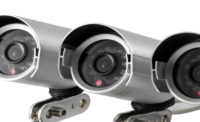Stow the crystal ball. What rolled out in Dallas at the ASIS International event earlier this fall or even at the spring International Security Conference in Las Vegas may indicate what will be specified next year. But, as in the past with security video and its camcorder chip origins, what’s happening with consumer electronics, computer gaming, homeland security and at the futures conferences of the National Association of Broadcasters may point to more developments.
That future? High definition cameras, more video analytics, body-enabled interfaces and intelligent system-directed decision making based on on-the-fly captured images. Cameras are turning into high tech sensors that alarm on incidents, alert other systems to take appropriate action and store high resolution images for after-incident forensics. It’s less a matter of real-time monitoring by real-time people. But when it does come to monitoring and system operation, the near-term future may be more Wii than joystick or keyboard.

|
| Will gaming breakthroughs bleed into security video? Take, for example, Kinect for Xbox 360, a “controller-free gaming and entertainment experience” by Microsoft. |
For example, with Microsoft’s recent acquisition of Canesta, a small Silicon Valley company, security video’s future may include gesture recognition technology. It
lets security employees control computers, image displays and other devices through hand movements and other bodily gyrations. Canesta makes chips that, when coupled with a digital camera, give all manner of devices a sense of depth perception for the world around them, letting them “see” in three dimensions.
Last month, Microsoft began shipping Kinect, an add-on for its Xbox gaming consoles, which uses gesture recognition to allow people to play games with body motions instead of controllers. Players flick through menus with waves of the hand. Gestures may be a method of operating a security video monitoring system for situational awareness or a part of a video analytics system to note suspicious behavior.
Gaming’s Link to Security Video
But before the likes of Microsoft and Google take over enterprise security video, the coming year will be much like this year when it comes to the use of video. Most enterprises that see risk mitigation value in security video already have it. And change costs money while radical change costs even more money. In addition, if it works, why break it?
Though evolution continues.
Managed video as a service, video surveillance as a service, remotely monitored video – whatever the name, there is a growing attraction to the approach, thanks in part to IT’s own embrace of the concept.
Network camera prices will continue to drop. Undoubtedly, network video surveillance solutions are gaining major traction in large scale deployments where the lower total cost of ownership, integration benefits and improved resolutions are clear advantages over analog solutions, according to IMS Research. The overall transition to HD/megapixel cameras and dome-type cameras will see the average price of network cameras fall surely but slowly – because the product mix is moving to higher value products. Furthermore, the adoption of open standards means that inexpensive cameras can easily be supported by most video management system (VMS) platforms.
Also according to IMS Research, the biggest trend for video analytics is searchable or forensic analytics. In the same way that search engines created mass appeal for the Internet, searchable analytics should change the way that stored video is searched by making it quicker, easier and more cost effective.
High on High Definition
Still, without a doubt, next year will continue to be the year of high definition cameras.
There will be less focus on pixel count and more on other important factors, such as camera quality, low light capabilities, sensor size and dynamic range. And HD will be the domino knocking over codec, necessitating the use of H.264 (and variants of H.264, such as H.264 SVC) as a means of regulating bandwidth and storage.
More Intelligence in VMS
There are also security video standards falling into place through the Physical Security Interoperability Alliance (PSIA) and the Open Network Video Interface Forum (ONVIF). Many industry observers see PSIA as covering all types of security systems while ONVIF centering more on video.
Without a global standard, end users and integrators will always need to consider the need for extra integration work before making their final decision regarding system components for their security solution, notes Jonas Andersson at Axis Communications and chairman of ONVIF’s steering committee. A global standard makes it easier for everyone as it ensures interoperability between the products regardless of brand.




